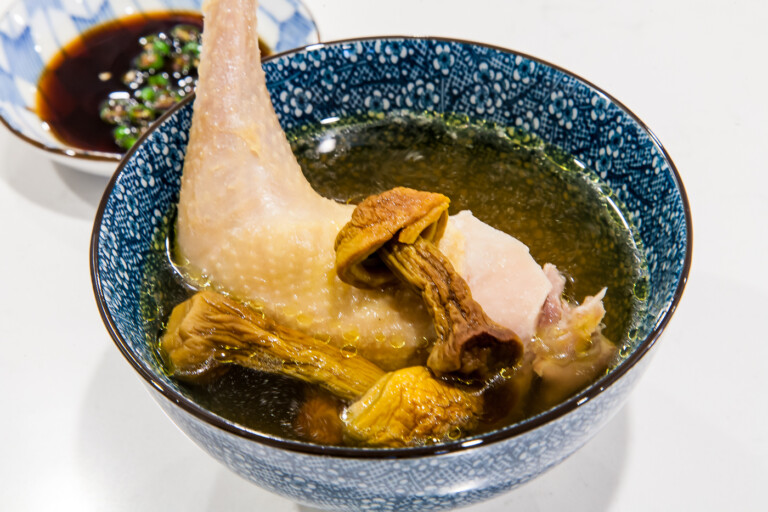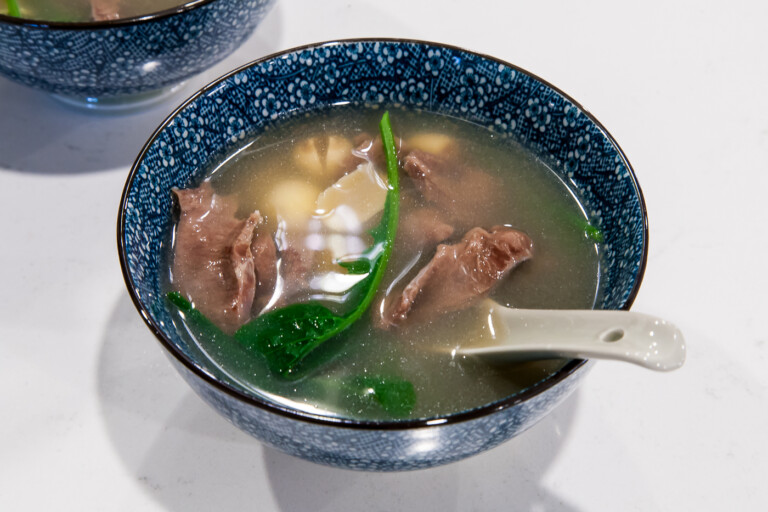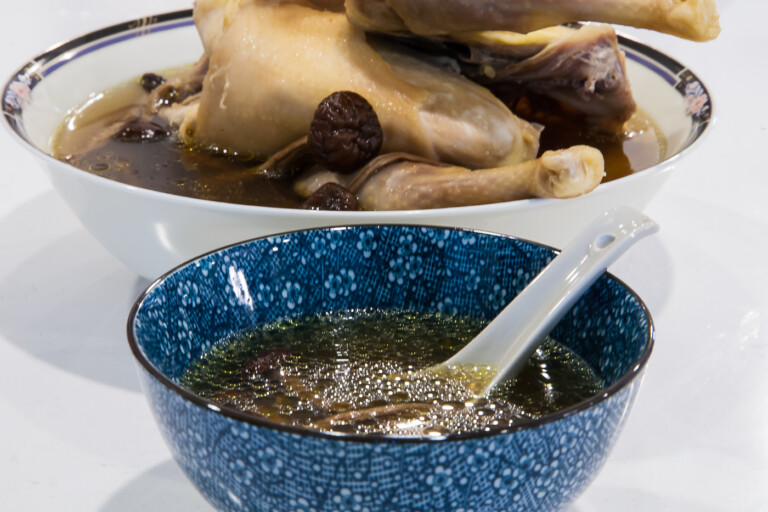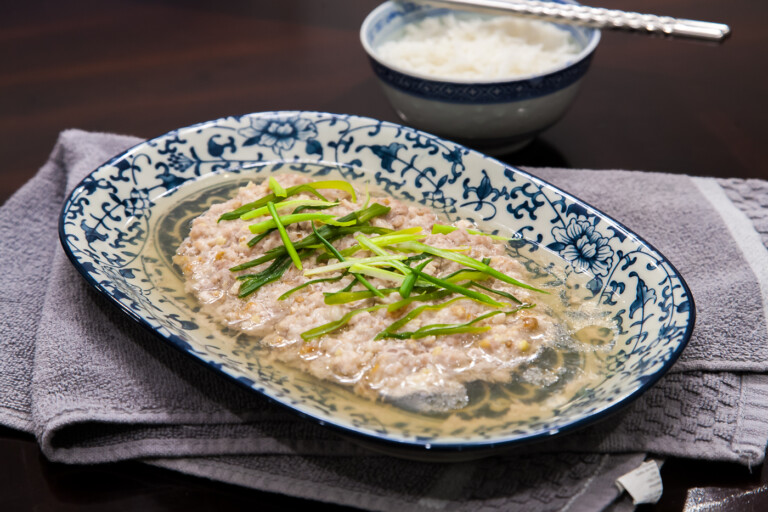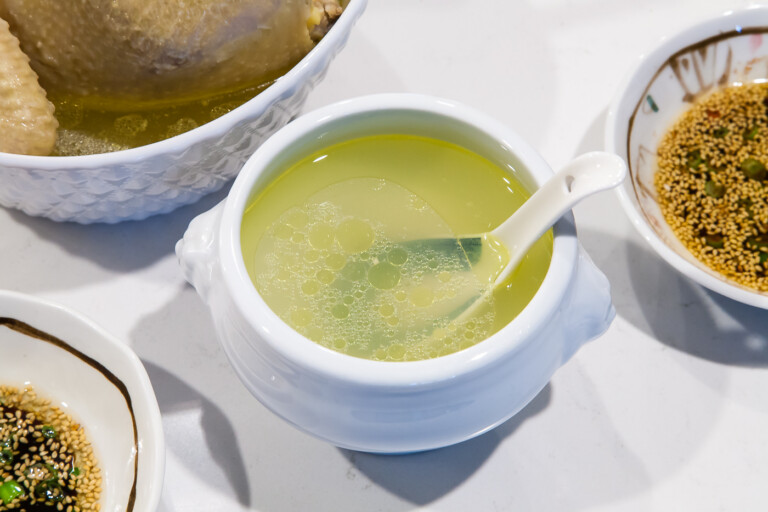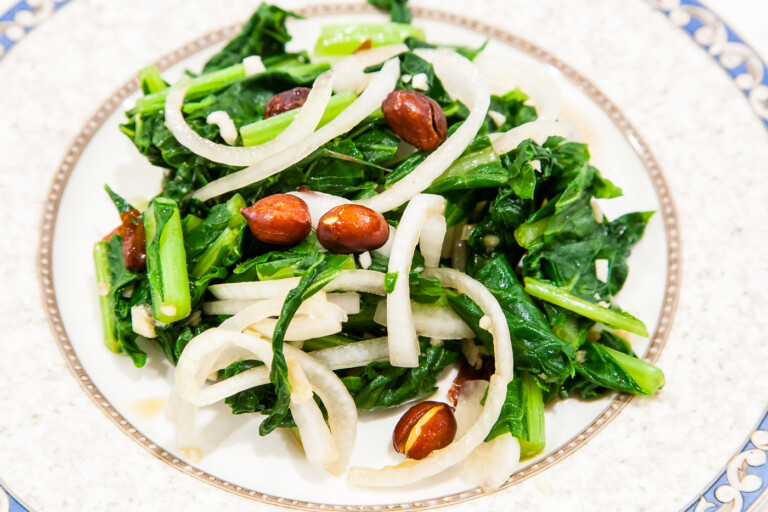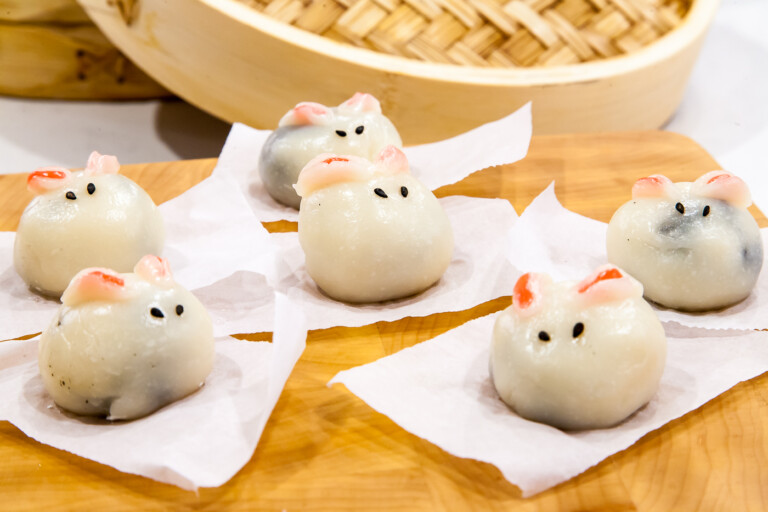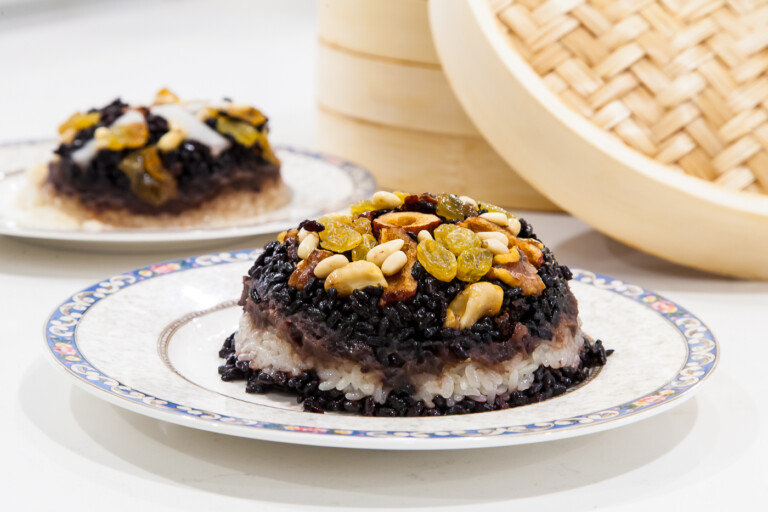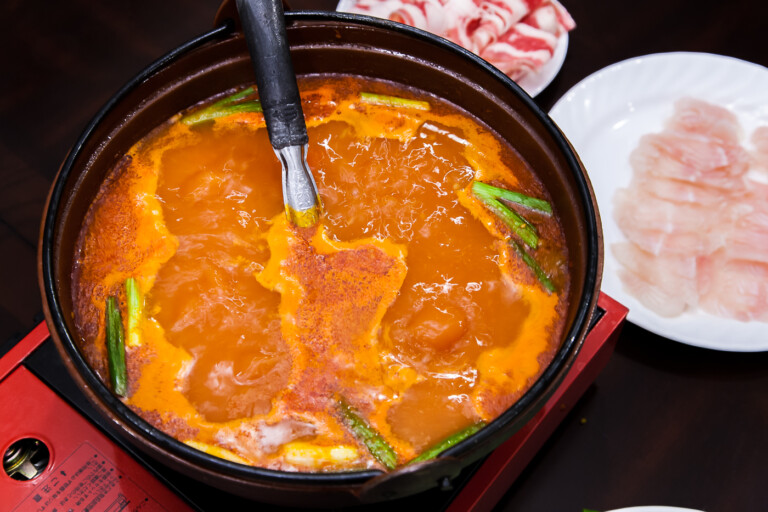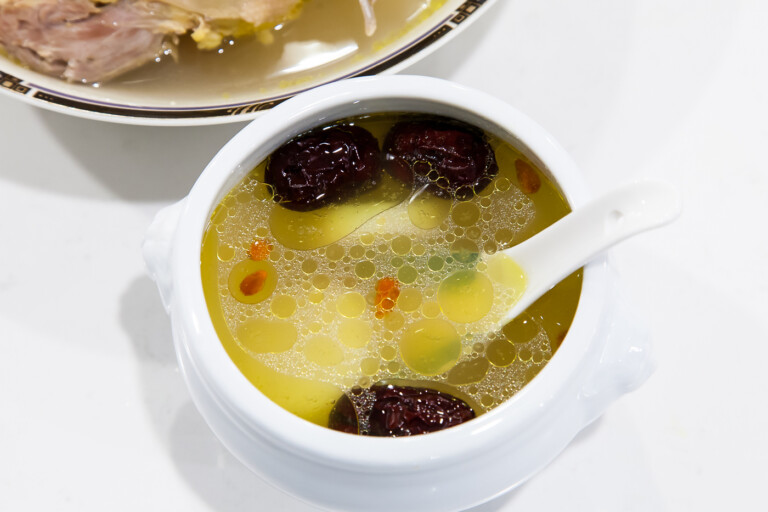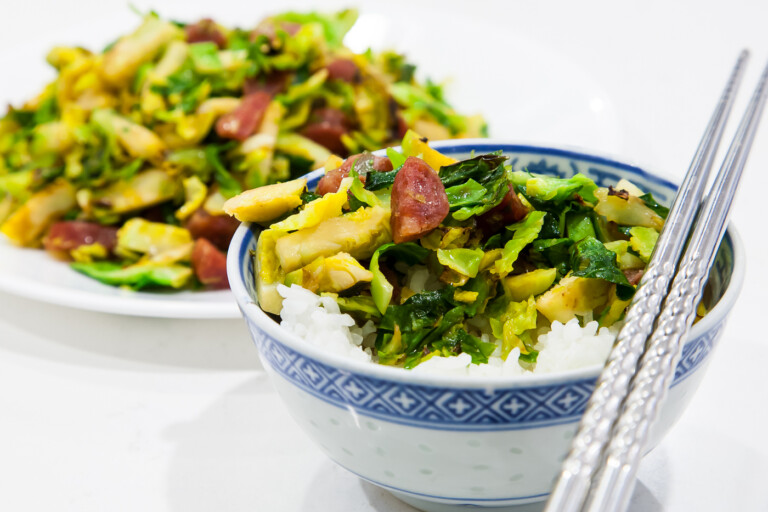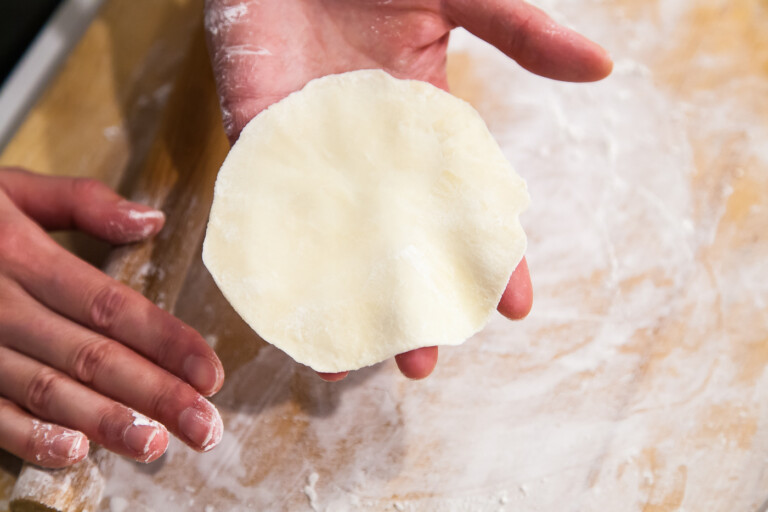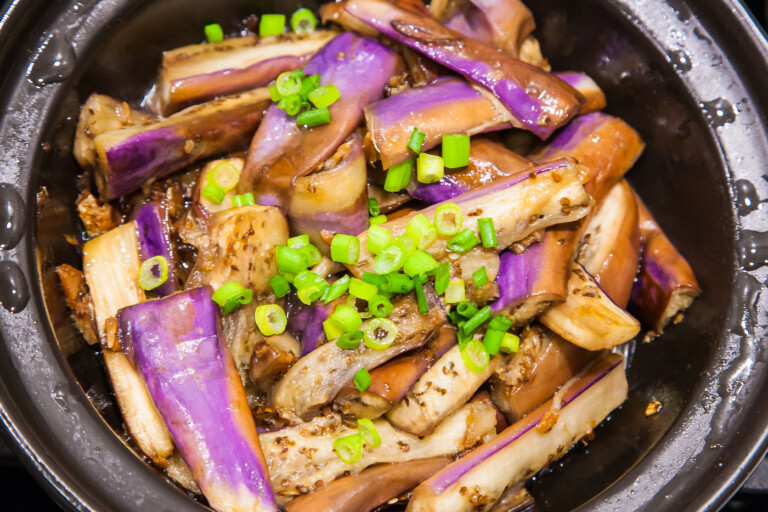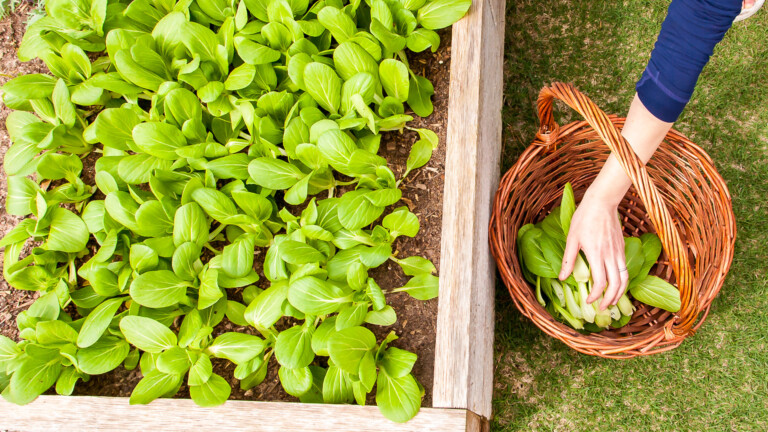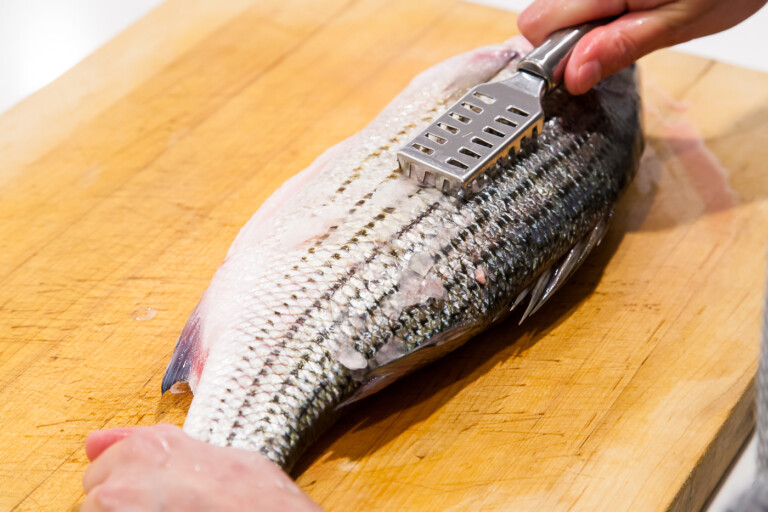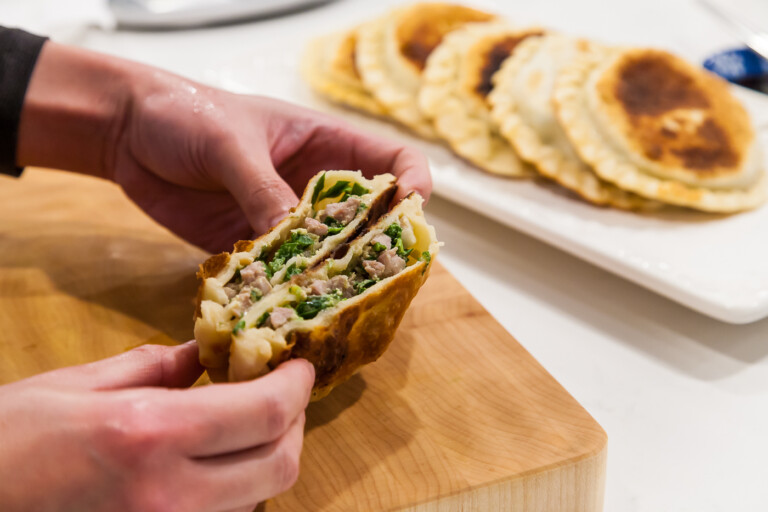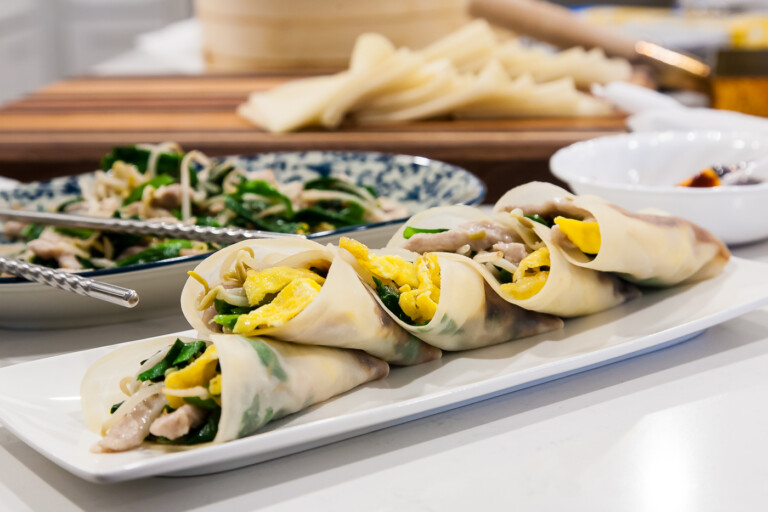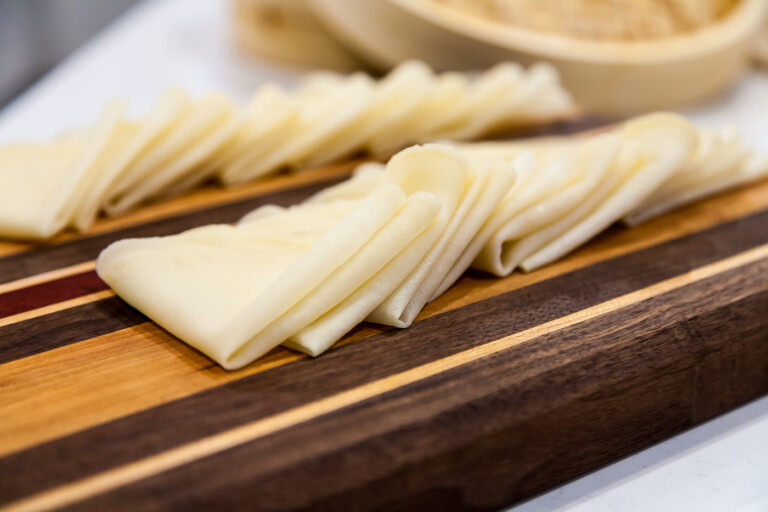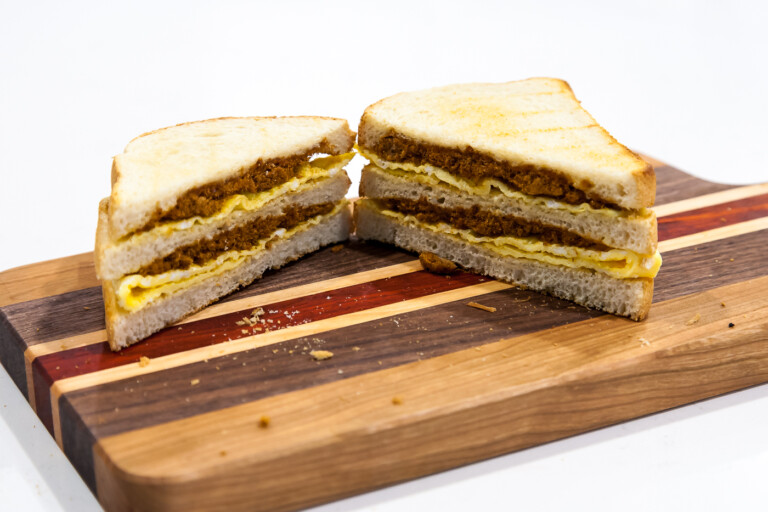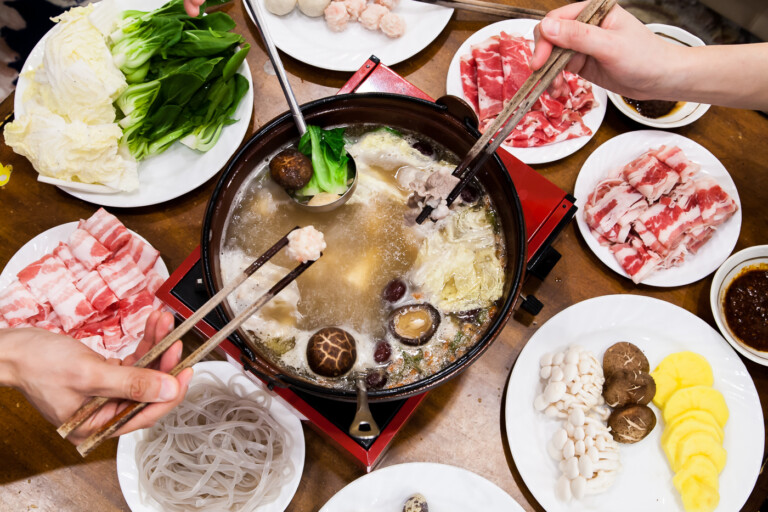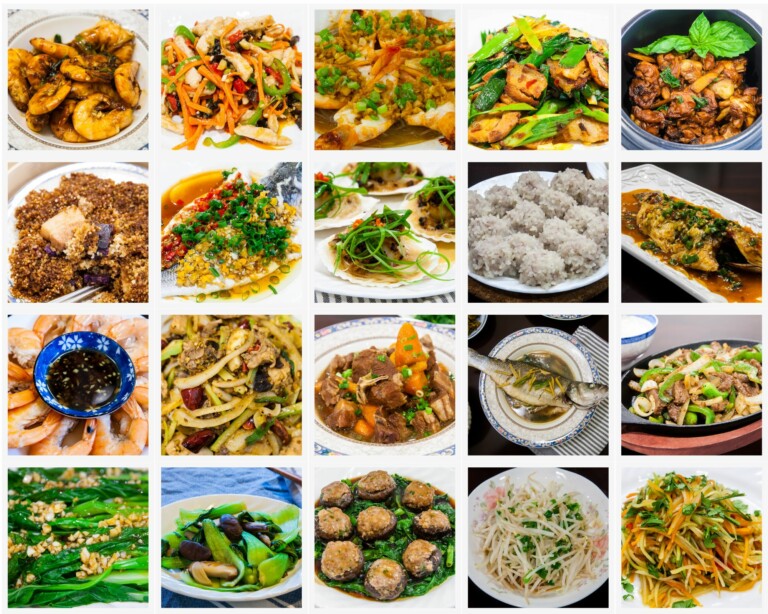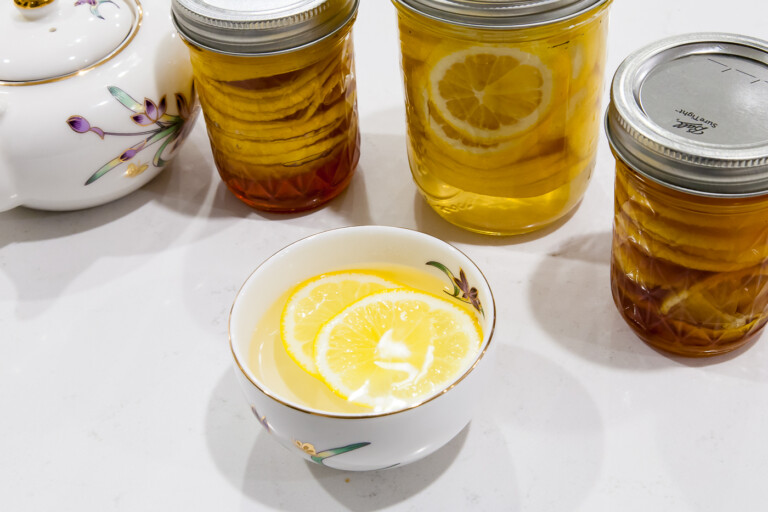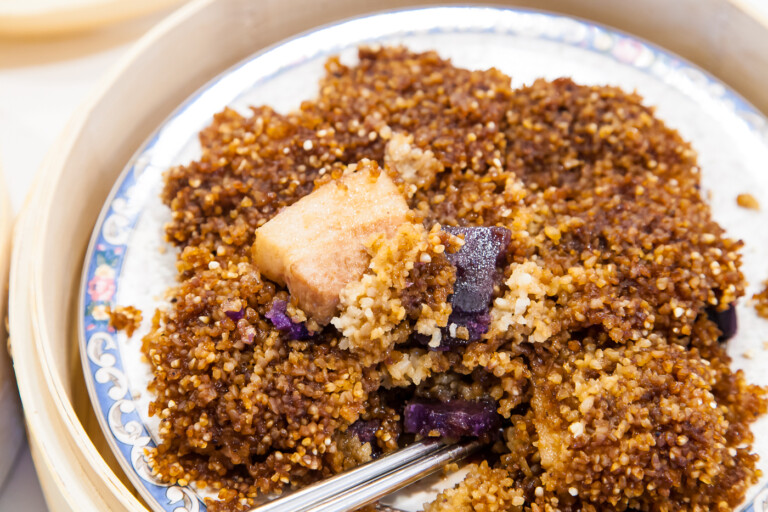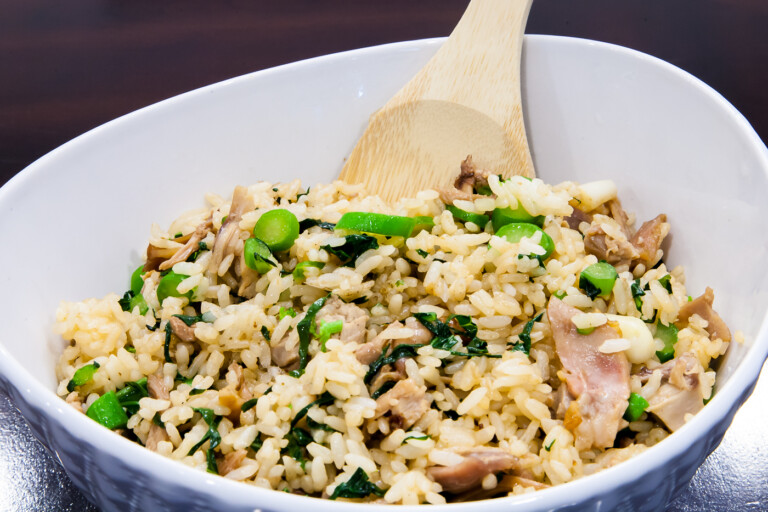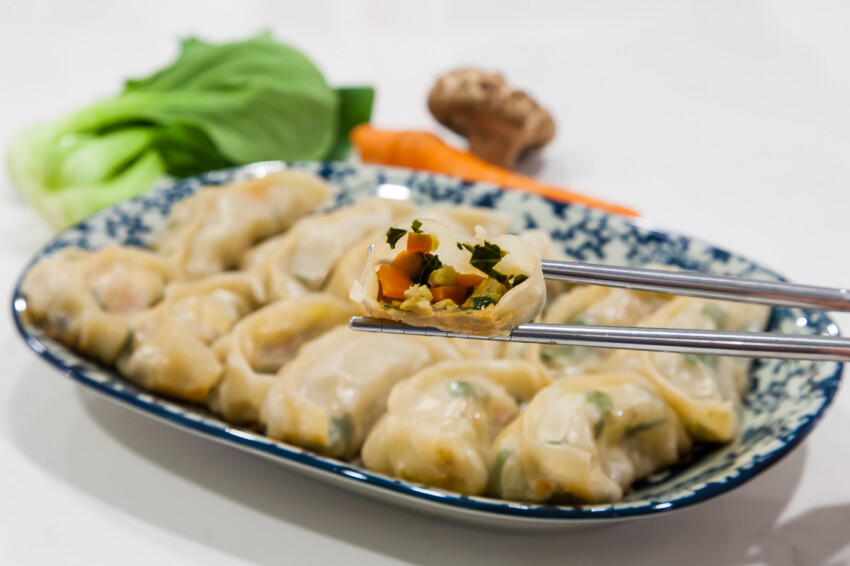
Vegetarian Dumplings – with Shanghai Bok Choy (青江菜素馅饺子 Qing Jiang Cai Su Xian Jiao Zi)
August 6, 2022 Print
I made dumplings when we had good friends over the other day. As I mentioned in my previous Chinese Chives, Pork, and Shrimp Dumpling, I like to make dumplings when we have multiple guests for dinner gatherings. It’s always a fun and relaxing experience. We all gather around the kitchen counter folding dumplings while chitchatting at the same time. The more people the merrier.
Many of our friends had never folded dumplings before so it was a rewarding experience for me to teach them and watch them become experts with just a few tries. For this past gathering, some of our friends were vegetarian so I made both meat and vegetarian filling. That’s when I realized that I never posted a vegetarian dumpling recipe.
There are just as many different vegetarian dumpling fillings as there are meat dumpling fillings. For today’s recipe, I picked Shanghai bok choy as the main vegetable, with carrots and shiitake mushrooms as secondary vegetables. It’s always good to add some type of protein into the dumpling filling for taste and for nutritional purposes. I used eggs here but you can use tofu if you are vegan. When it comes to seasonings for the vegetable filling, I tend to use fewer seasonings. In my opinion, there is no need to add ginger or Chinese five spice to a vegetarian filling. But I do add Sichuan-peppercorn-infused oil to give the filling more fragrance.
Folding vegetable dumplings is a bit harder than folding meat dumplings because the vegetable filling is less densely packed than a meat-based filling. Also, vegetable fillings tend to have more water during the cooking process. As a result, it’s even more important to make sure all the dumpling edges are tightly sealed.
For more vegetable options, check the notes at the end of the post.
Vegetarian, Gluten Free
Preparation Time: 1.5 hours
Total Time: 2 hours
Servings: ~50 dumplings
Ingredients:
- 1/2 lb (~225 g) Shanghai bok choy or baby bok choy 1
- 2 medium carrots
- 5 fresh shiitake mushrooms 2
- 2 green onions
- 3 large eggs
- 1 pack of store-bought dumpling wrappers/skins 3 (alternatively, you can try my recipe for homemade dumpling wrappers)
- 1 teaspoon kosher salt (or 1/2 teaspoon of table salt)
- 2 tablespoons light soy sauce 4
- 1 + 3 tablespoons vegetable oil
- 1 teaspoon Sichuan peppercorns 5
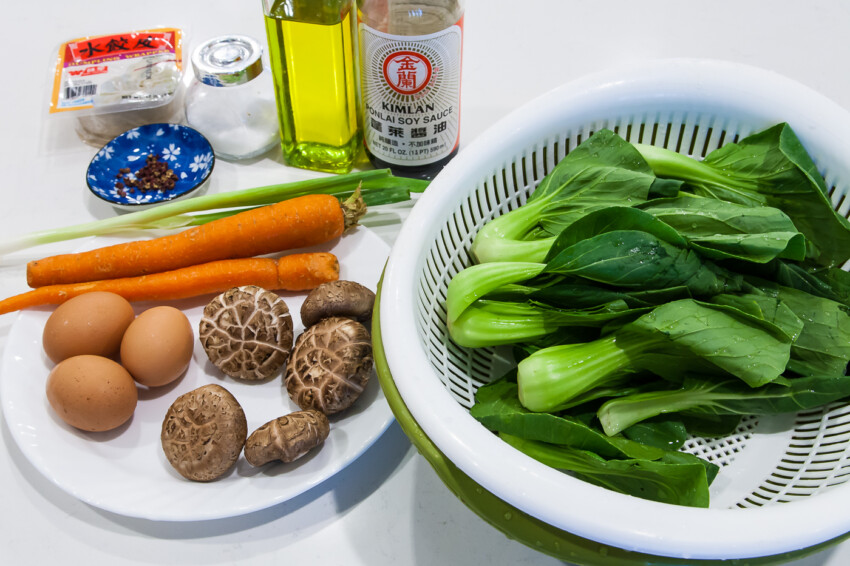
Preparation:
- Wash the Shanghai bok choy thoroughly.6 Cut them into small pieces. Wipe off the any dirt from the shiitake mushrooms and chop them into small pieces as well. Mince the green onions. Add everything to a large mixing bowl.
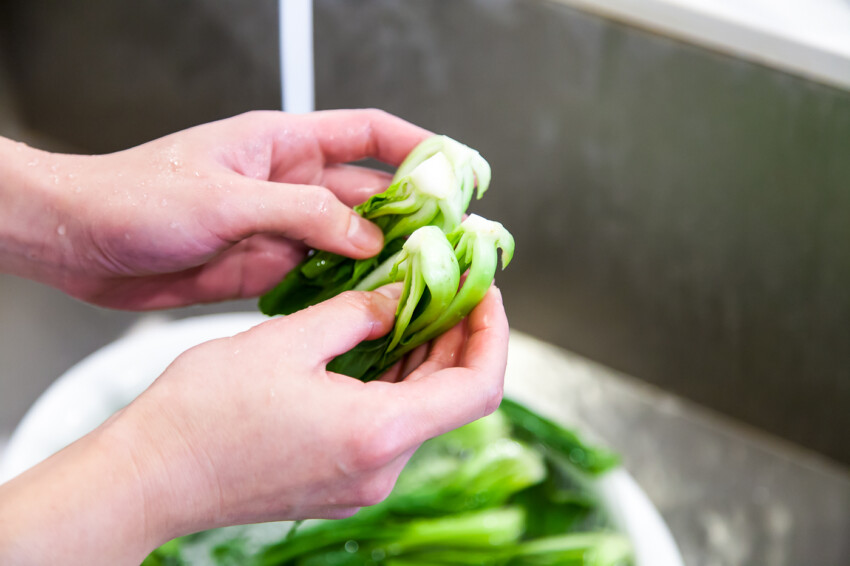
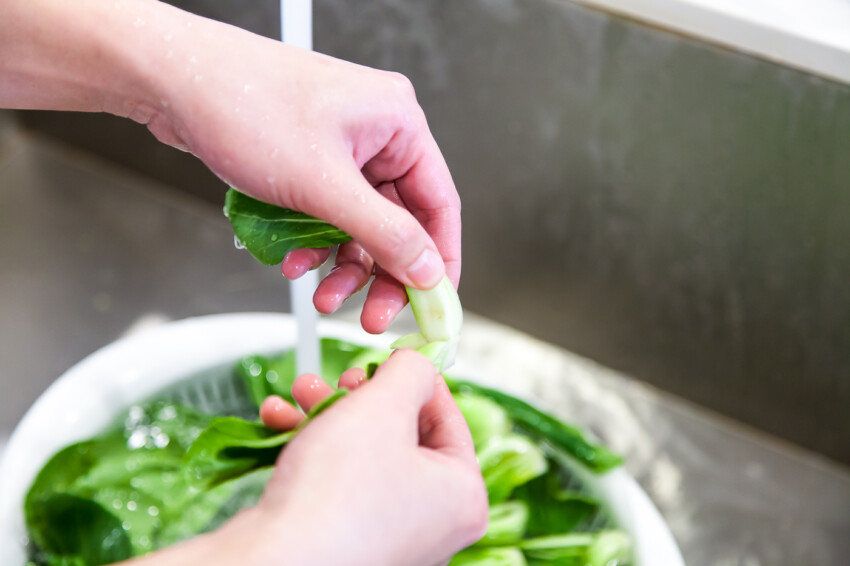
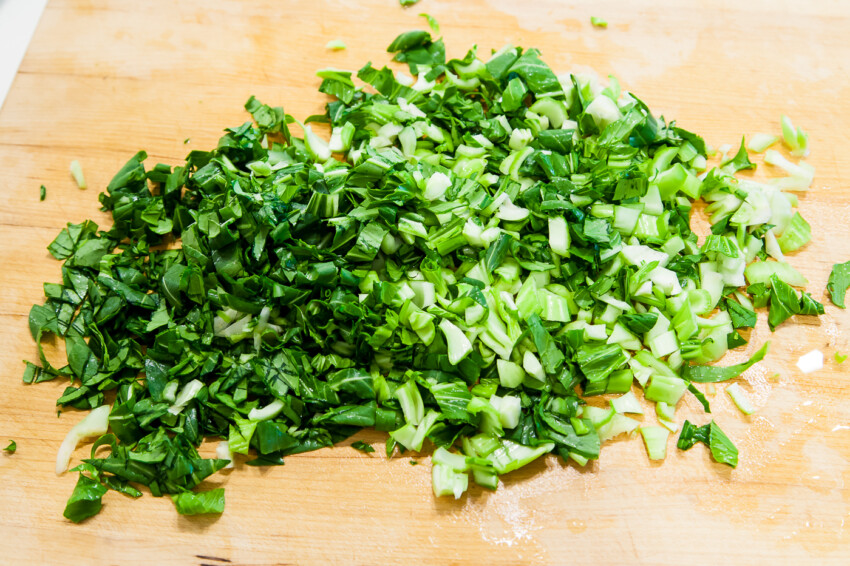
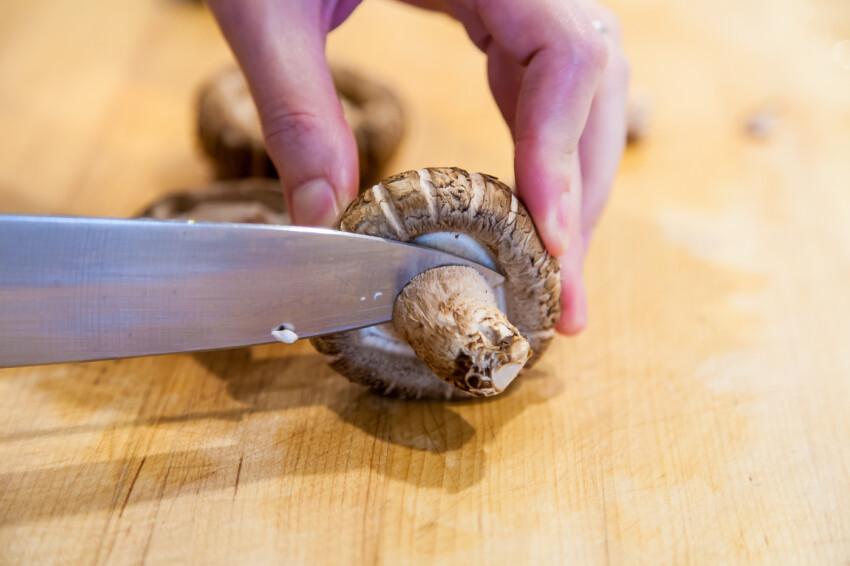
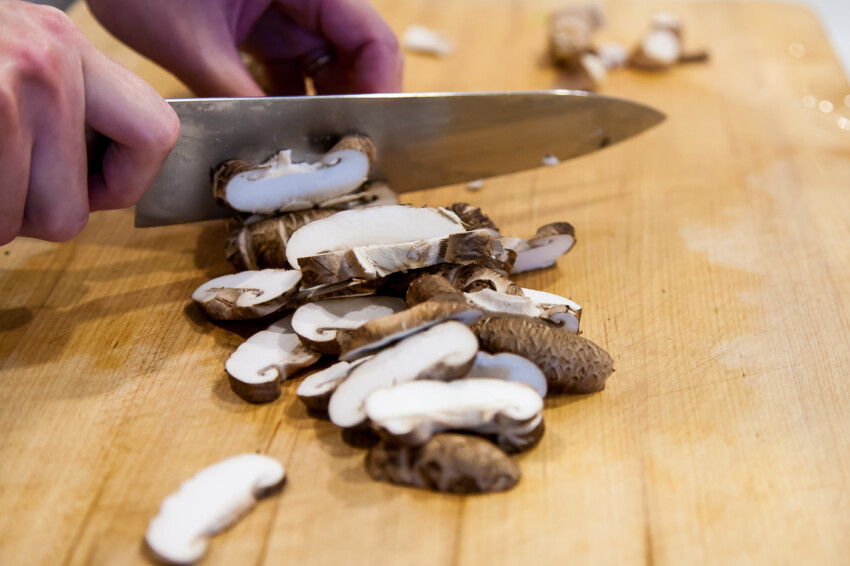
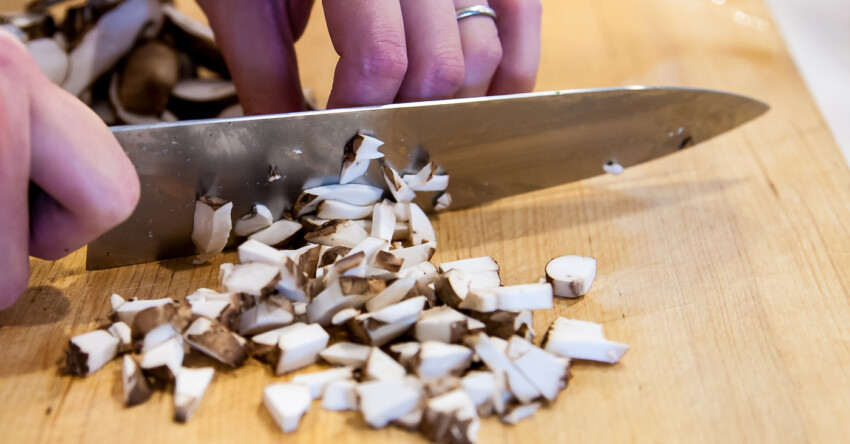
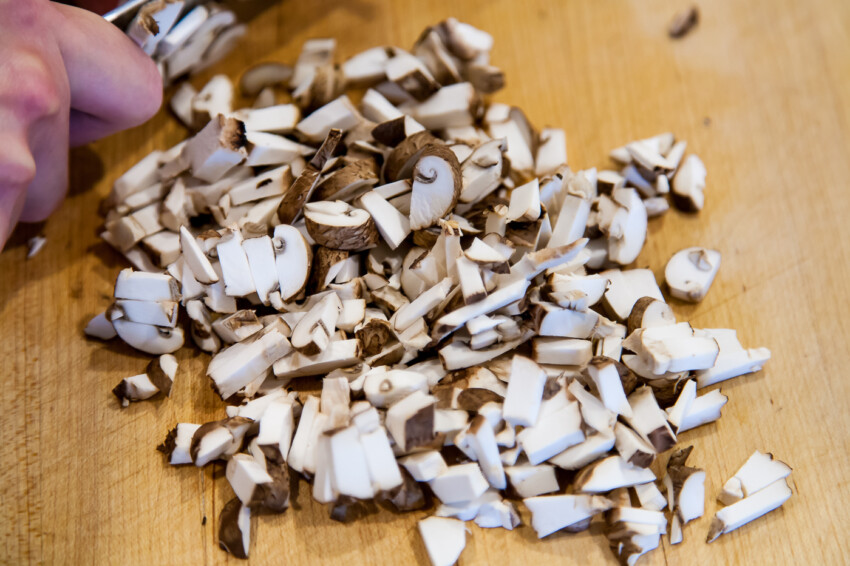
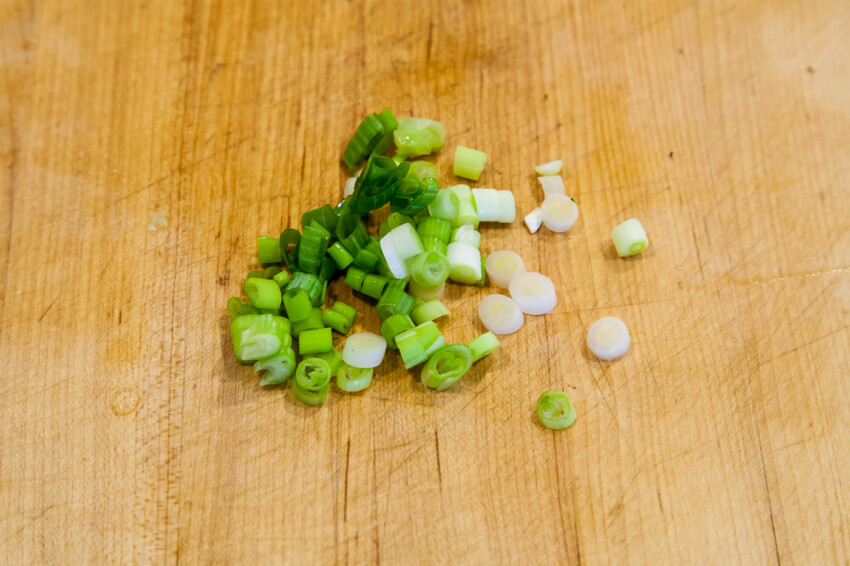
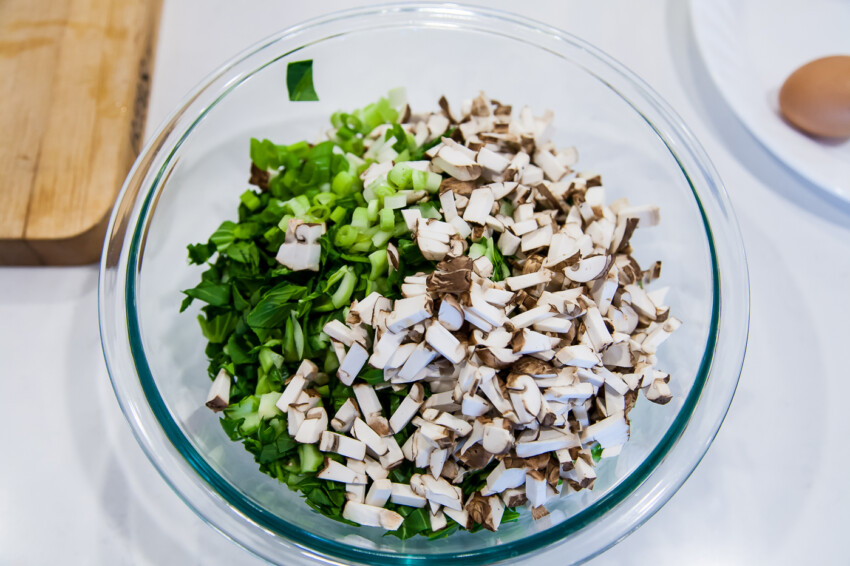
- Peel the carrots and chop them into small pieces or sticks. Heat a well seasoned skillet under medium heat. When the skillet is warm, add the 1 tablespoon vegetable oil and the chopped carrots. Gently pan fry the carrots for 2 minutes until the carrots are semi soft. Turn off the heat and leave the carrots to cool slightly.
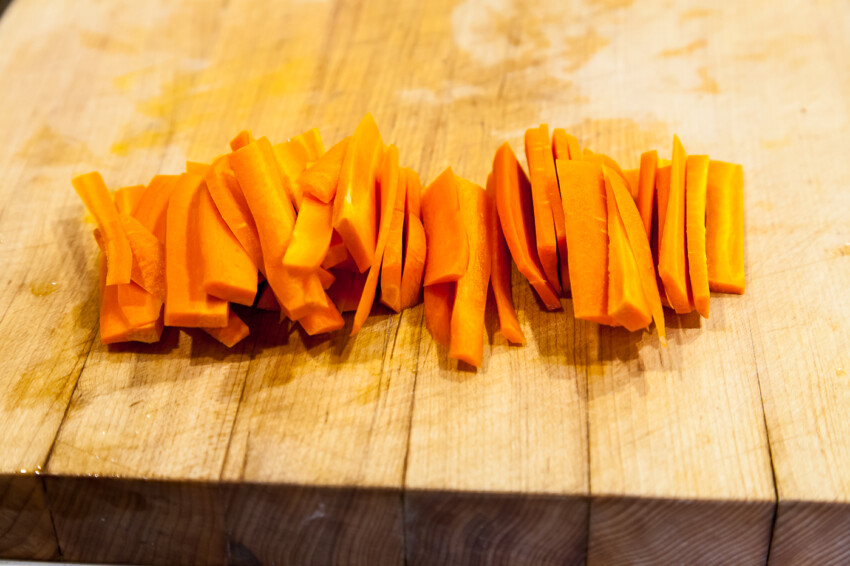
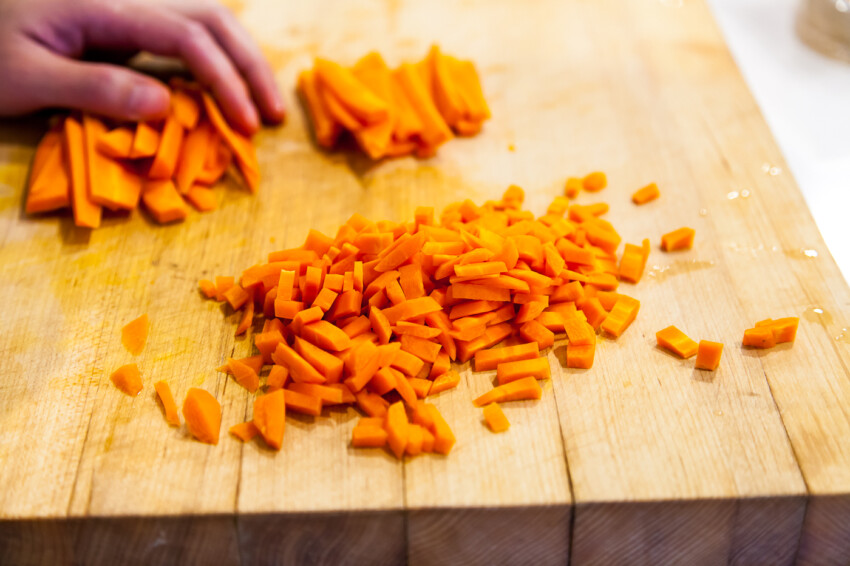
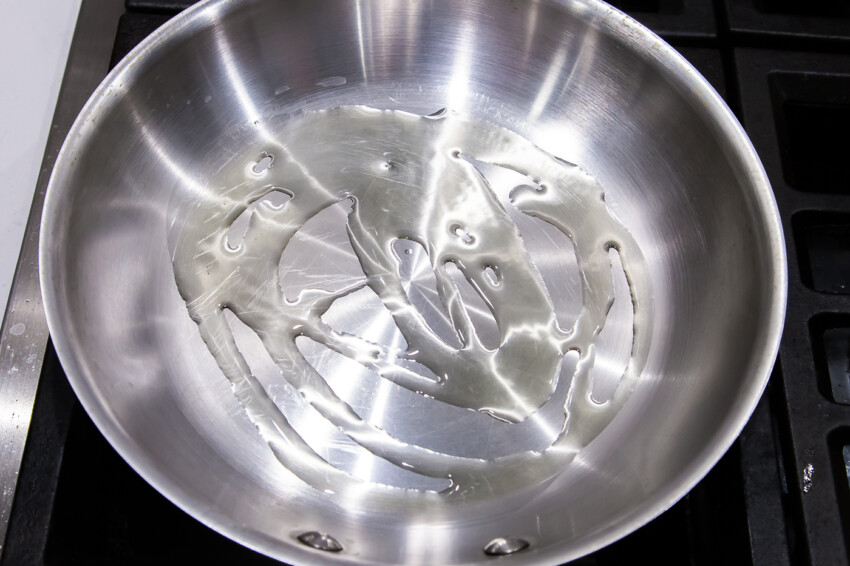
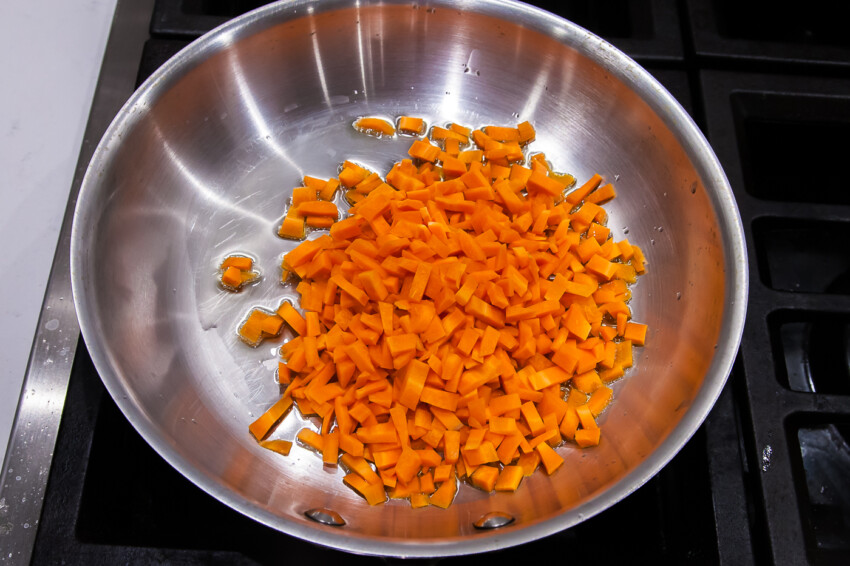
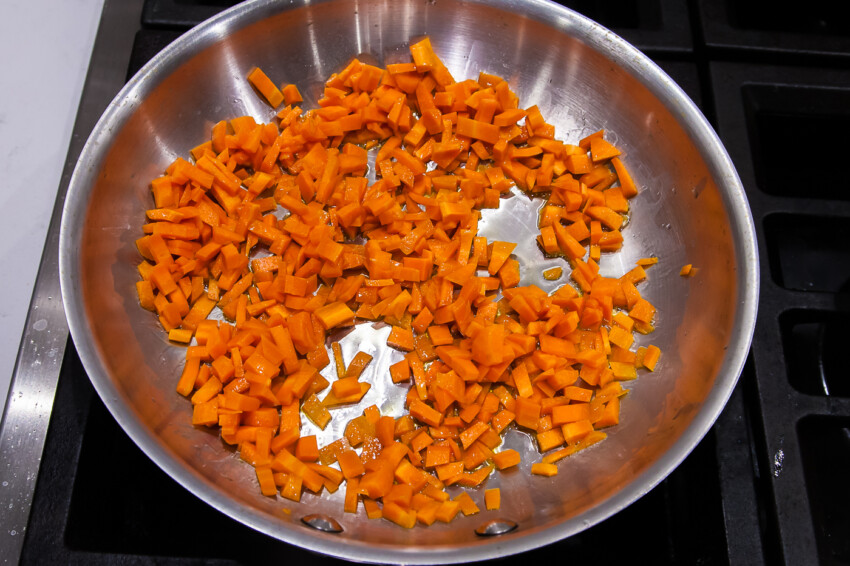
- Break the 3 large eggs into a medium mixing bowl. Use a pair of chopstick, a fork, or a whisk to mix the egg whites and yokes together. Mix well. Heat a medium non-stick pan under medium heat. When the pan is warm, pour in the egg mixture. Swirl around the egg mixture so it forms a big, round, and flat pancake. Cook each side for 1 to 2 minutes. The egg pancake does not need to be perfect at all since it will be chopped up later. Lay the egg pancake on the cutting board and cut it into small dices.
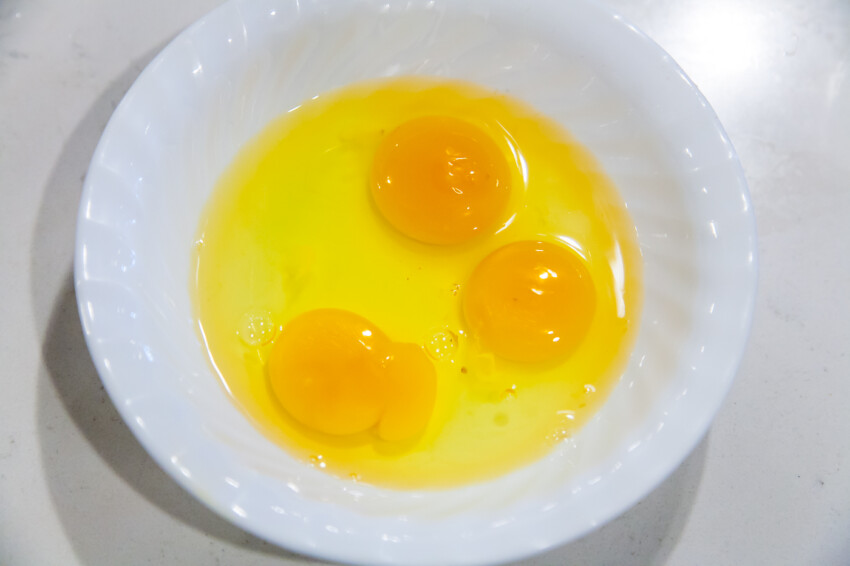
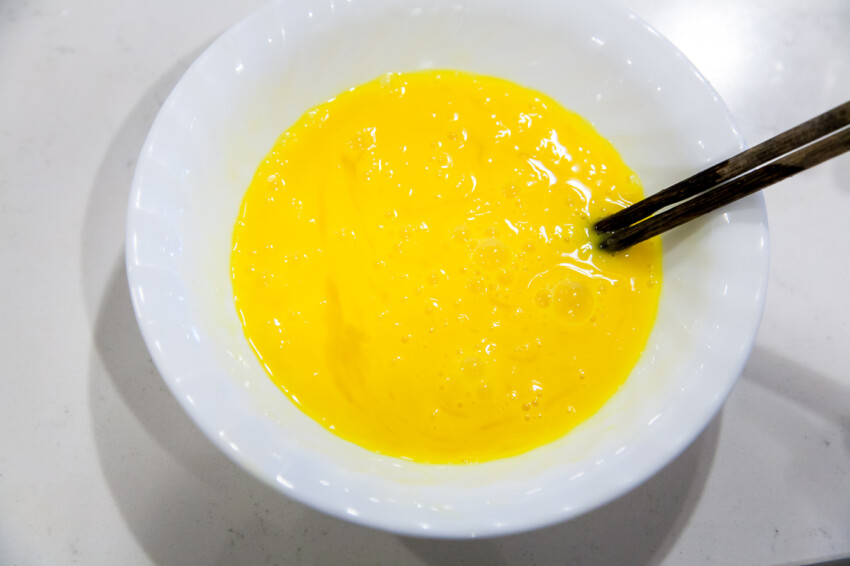
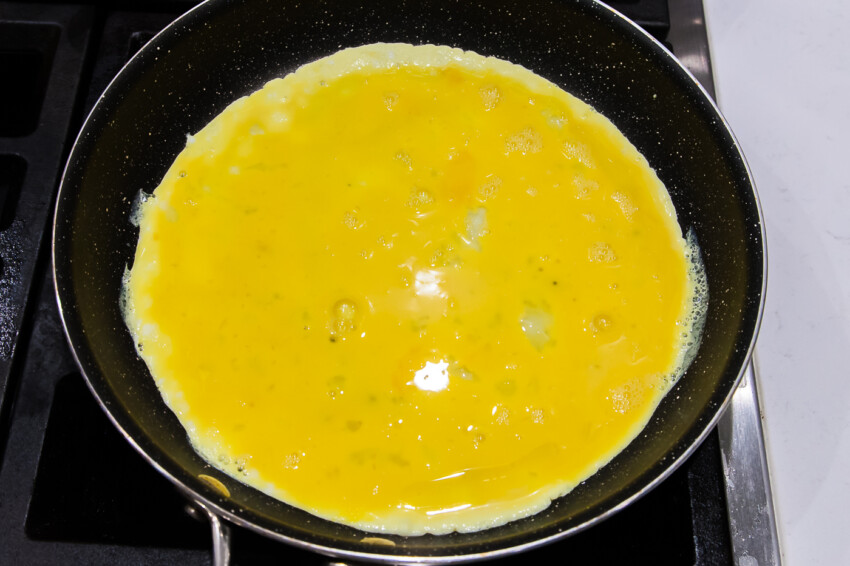
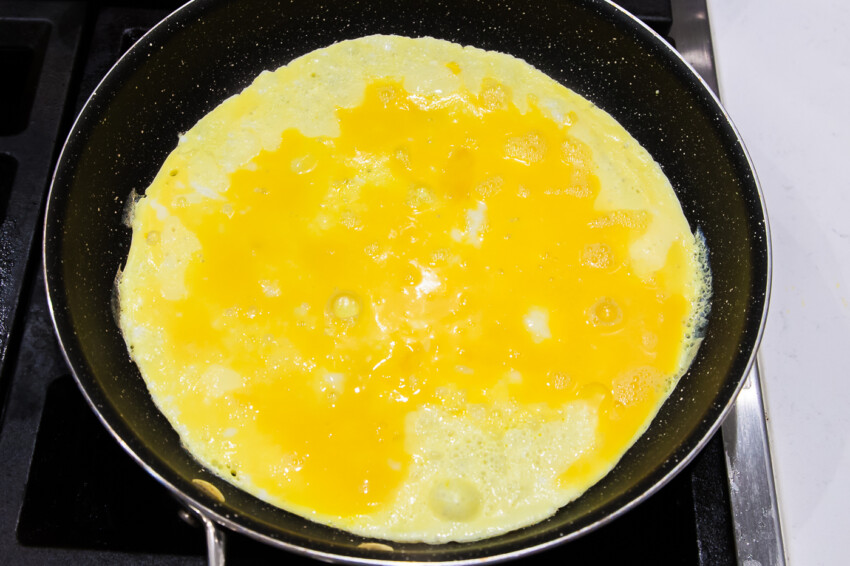
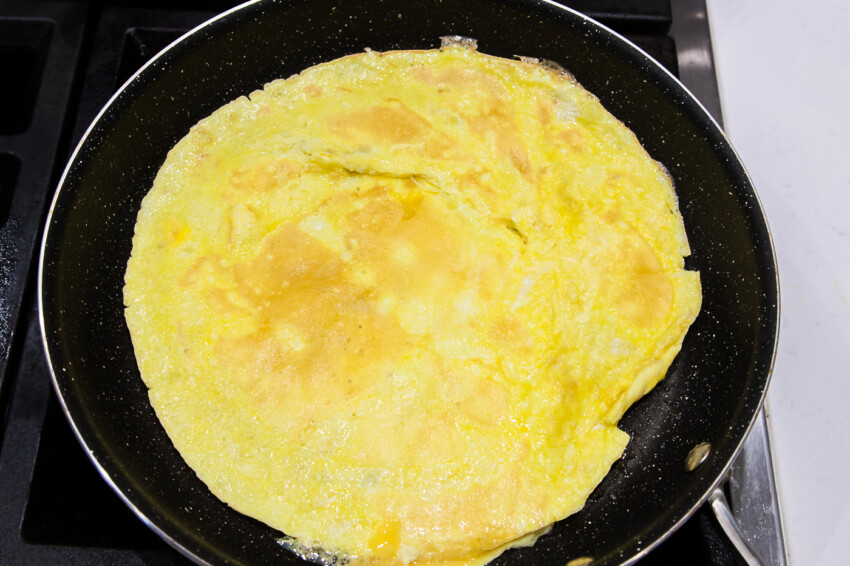
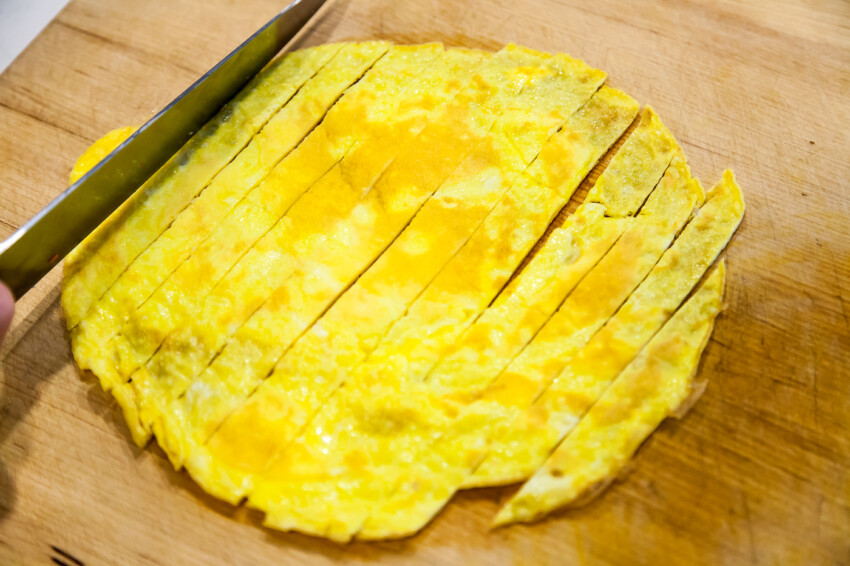
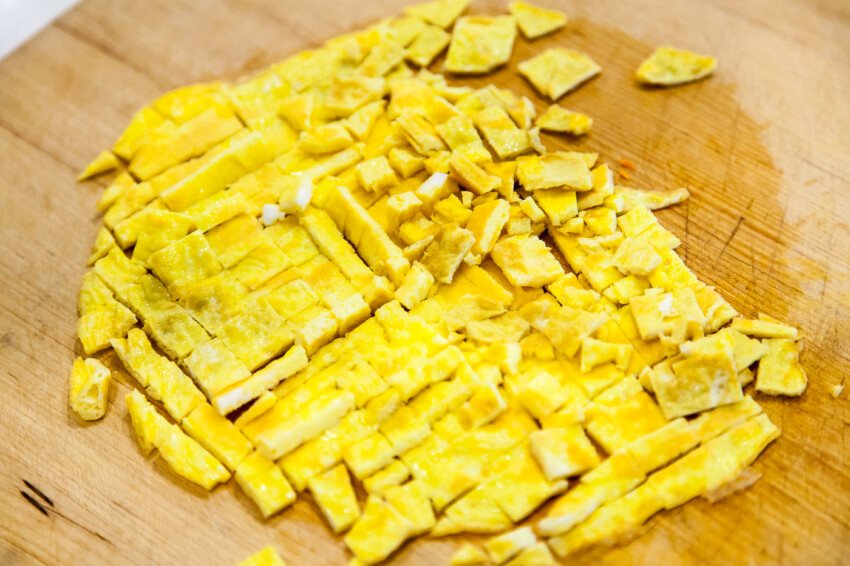
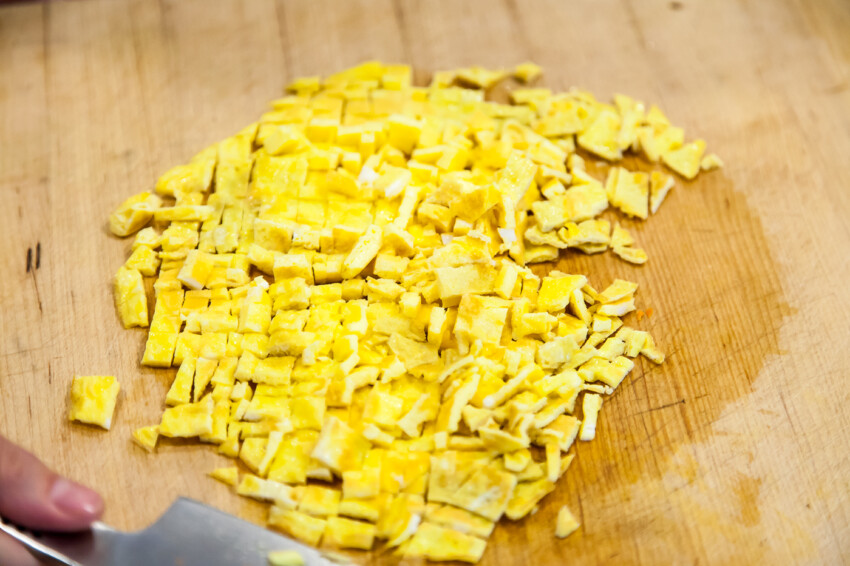
- Heat a cast iron skillet on medium-high heat and add 3 tablespoons of vegetable oil and 1 teaspoon of Sichuan peppercorns. When the Sichuan peppercorns change color to dark red, take them out. Save the Sichuan-peppercorn-infused oil. For stronger flavor, grind the cooked Sichuan peppercorns into tiny pieces.5
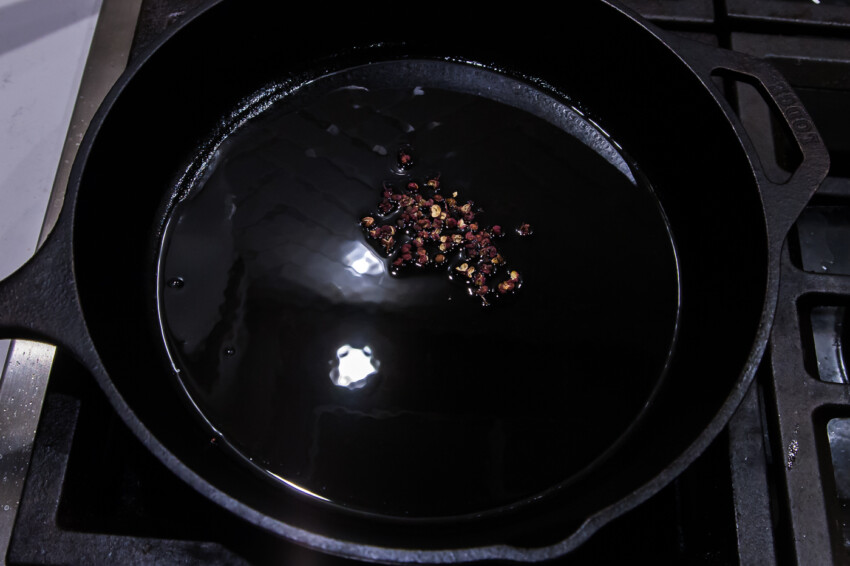
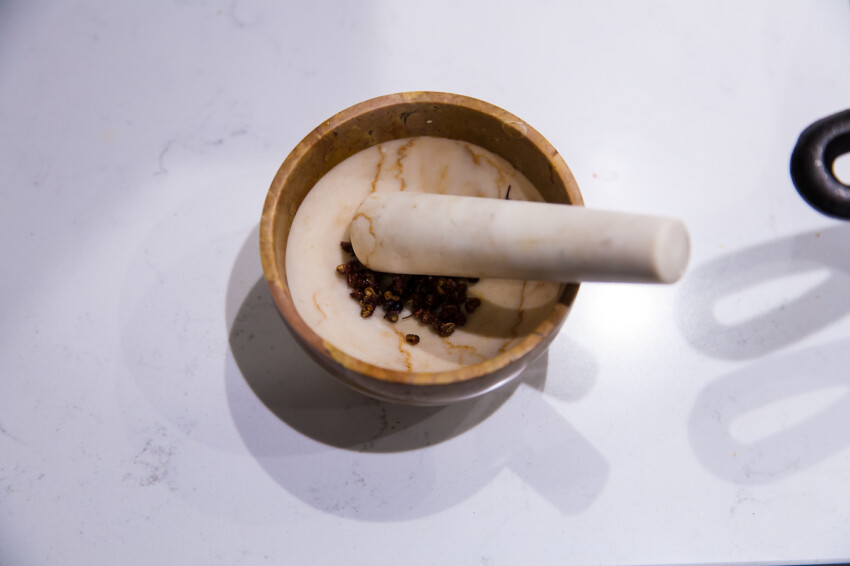
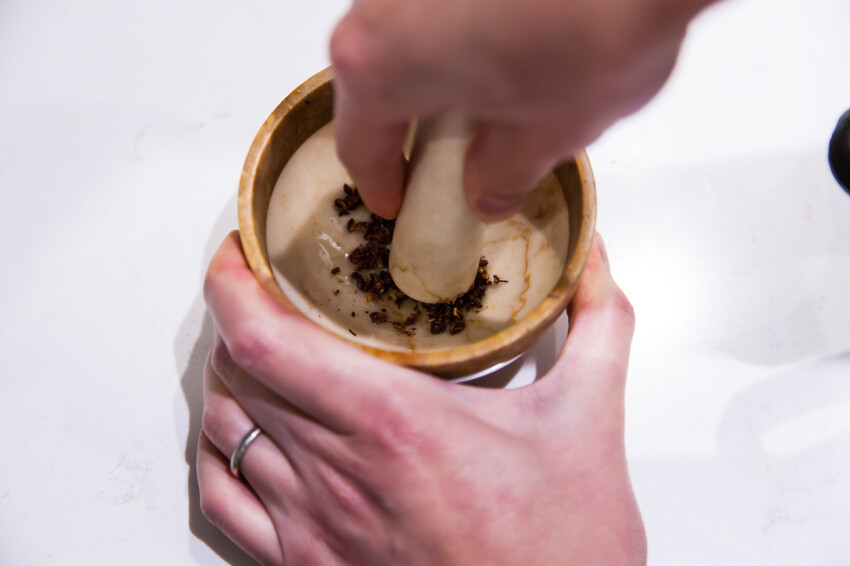
- Add the semi-cooked carrots and diced eggs to the same large mixing bowl as the Shanghai bok choy and other veggies. Then add 1 teaspoon of kosher salt (or 1/2 teaspoon of table salt), 2 tablespoons of light soy sauce, the Sichuan peppercorn infused oil, and the ground Sichuan peppercorns. Using a pair of chopsticks or a large spoon, start slowly mixing everything in a circular motion either clockwise or counterclockwise. Keep mixing in one direction only. It only takes a few minutes.
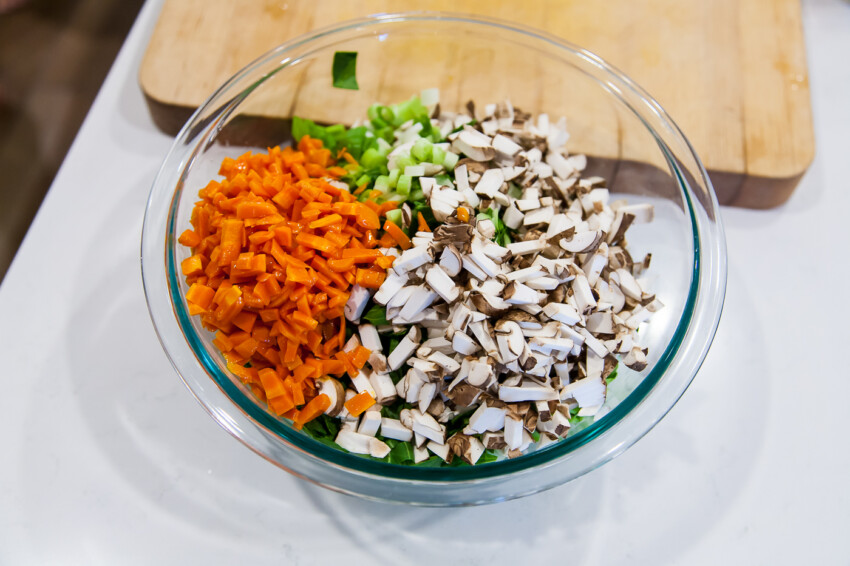
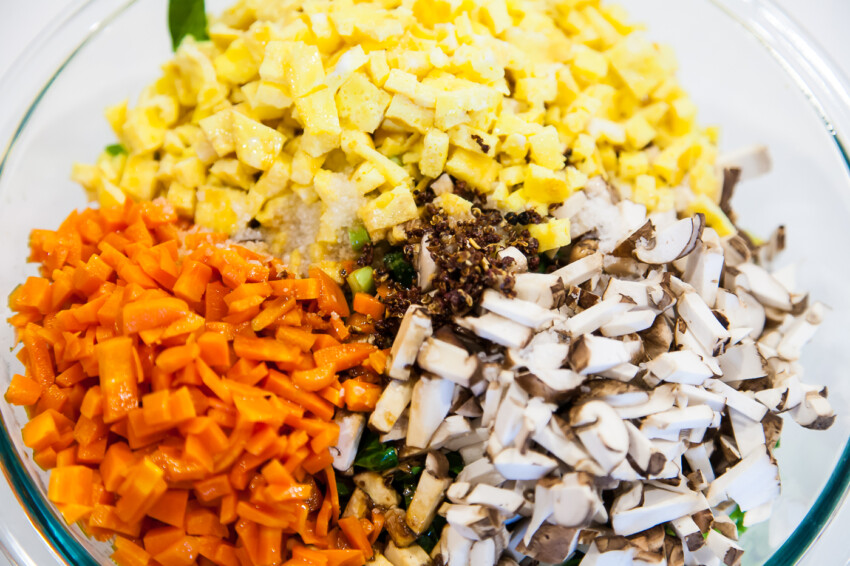
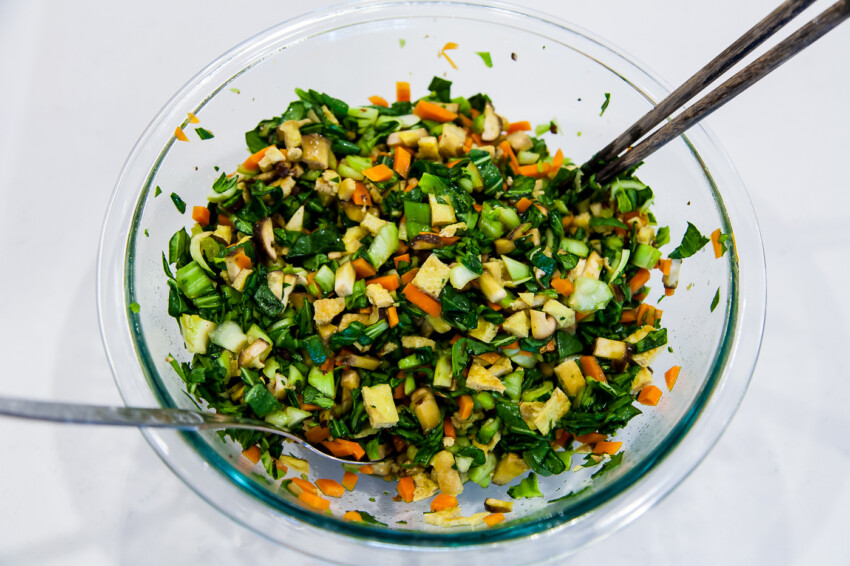
- Follow steps 5-8 from my other dumpling post for detailed instructions on how to fold the dumplings (the pleated way) and how to cook the dumplings (two cooking methods). It is a little harder to fold vegetable dumplings because the vegetable filling is not as “sticky” as ones with meat. So use a little less filling at first to get the hang of it.
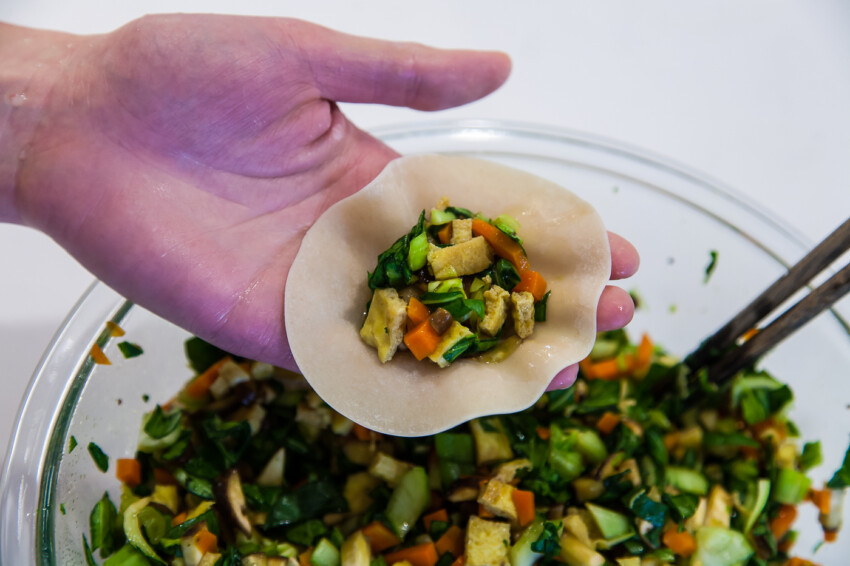
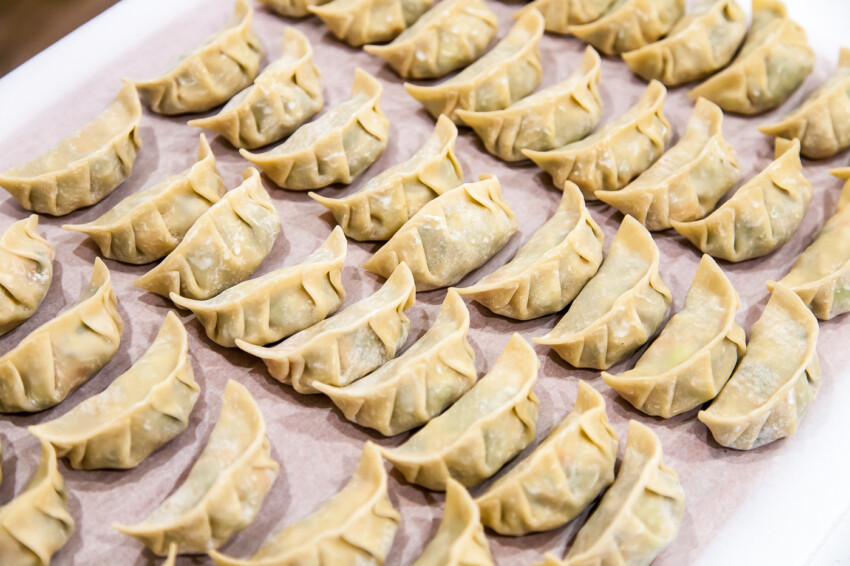
- Dipping sauce: for every 1 tablespoon of soy sauce, use 2-3 tablespoons of balsamic vinegar. For more flavors, add some chopped cilantro and minced garlic. For a spicy kick, add a few drops of chili oil or chili sauce.
- Frozen dumplings: follow step 10 from my other dumpling post for detailed instruction on how to freeze and store extra dumplings.
Bon Appétit
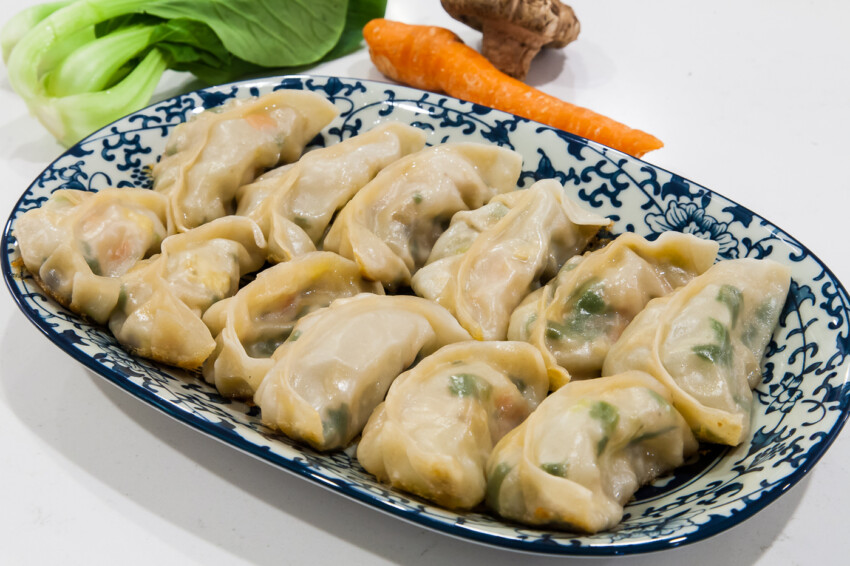

Notes:
- You can use either regular Shanghai bok choy or baby bok choy here. Besides Shanghai bok choy, Chinese leeks, Napa cabbage, zucchini, and cucumbers are all good candidates for making vegetarian dumplings. However, for veggies that have a high water content, such as napa cabbages, zucchini, or cucumbers, make sure to mix a little salt with the chopped veggies first. Then wait for 10 minutes and squeeze out most of the water before mixing the veggies with the other ingredients. Too much water can make your dumplings too runny.
- You can also use dried shiitake mushrooms here. Make sure the dried mushrooms are completely re-hydrated and softened.
- You can get either the northern type or southern type (often called Shanghai style). Northern type wrappers are in general slightly thicker and larger whereas the southern type is slightly thinner and smaller. In my opinion, the northern type is best suited for pot stickers or steamed dumplings, and the Southern or Shanghai style is best for boiled dumplings. But either type works well here. Alternatively, you can try my recipe for homemade dumpling wrappers.
- If you are gluten free or intolerant, use gluten free soy sauce or tamari.
- I like adding the ground Sichuan peppercorns to the filling to give more kick. You can certainly leave it out. If you don’t like the flavor of Sichuan peppercorns, use sesame oil instead.
- There can sometimes be a lot of dirt hidden inside Shanghai bok choy. I usually cut them first lengthwise into halves or quarters to help rinsing out the dirt.
As an Amazon Associate I earn from qualifying purchases.


